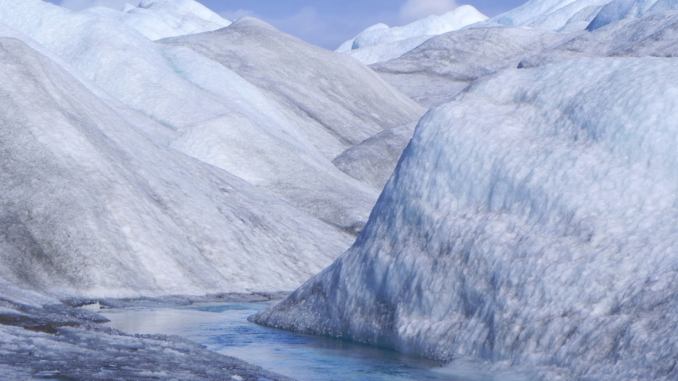
You can read here PROTECT paper number 11: A 21st Century Warming Threshold for Sustained Greenland Ice Sheet Mass Loss published in Geophysical Research Letters.
This article has been highlighted in Science in February 2021:
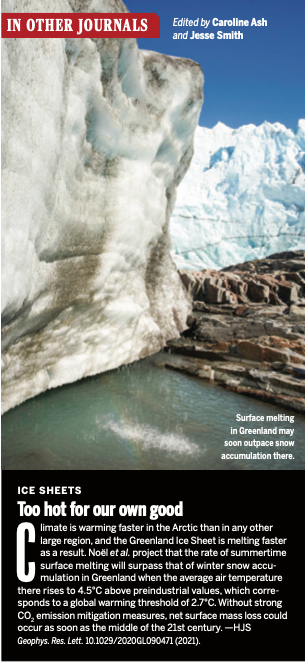
Here are the main findings:
- Our new paper projects the timing of the Greenland SMB = 0 threshold, using the climate model RACMO2. Under high-end warming scenarios, this threshold could be passed in the 2050s, while it may not be crossed at all in low-end scenarios.
- The study focuses on the Greenland ice sheet surface mass balance (SMB): roughly the difference between winter snowfall accumulation and meltwater runoff in summer. We ignore mass loss from iceberg calving, a complex process which is still hard to predict.
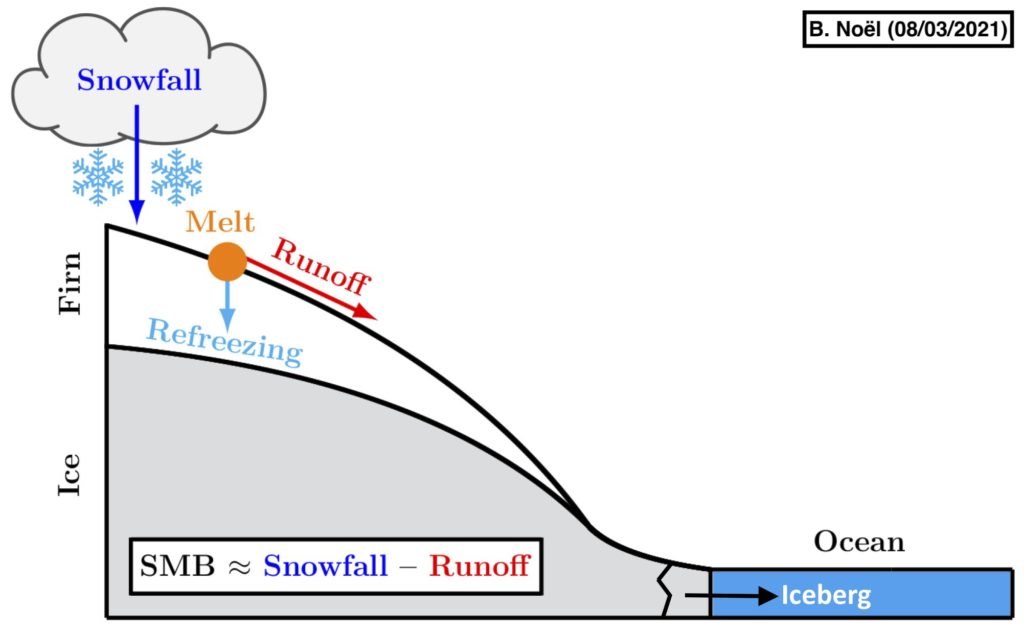
- Before the 1990s, the ice sheet was in approximate balance with the climate. Mass loss started thereafter as atmospheric warming increased runoff. We project SMB throughout the 21st century using the regional climate model RACMO2 at 1 km spatial resolution, forced by CESM2.
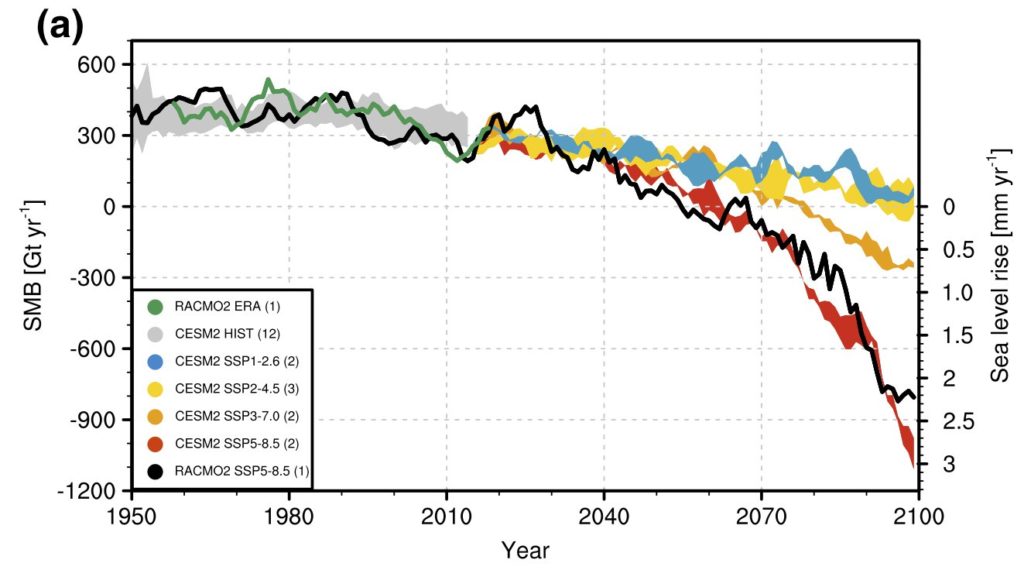
- Passing the SMB = 0 threshold means that about a fifth of the ice sheet area experiences mass loss at the surface (red shading), compared to a tenth before the 1990s (thick black line). The spatial resolution of the SMB field is 1 km.
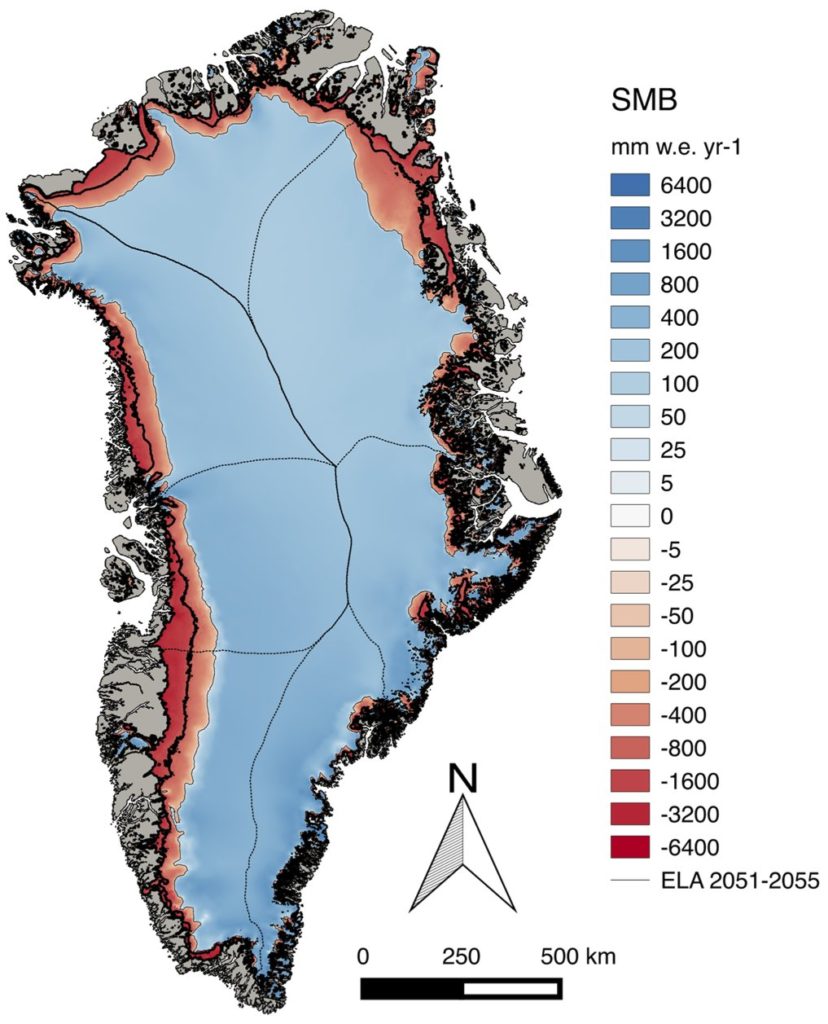
- We estimate that a local warming of 4.5°C (TGrIS) relative to preindustrial (1850-1900) marks the point where Greenland SMB flips from positive to negative. This local warming threshold translates to a global temperature increase of 2.7°C.

- We find that under high-end emission scenarios (SSP5-8.5), the warming threshold will be passed around 2055. Passing this threshold, the Greenland ice sheet could enter a stage of sustained surface mass loss with a persistent negative SMB.
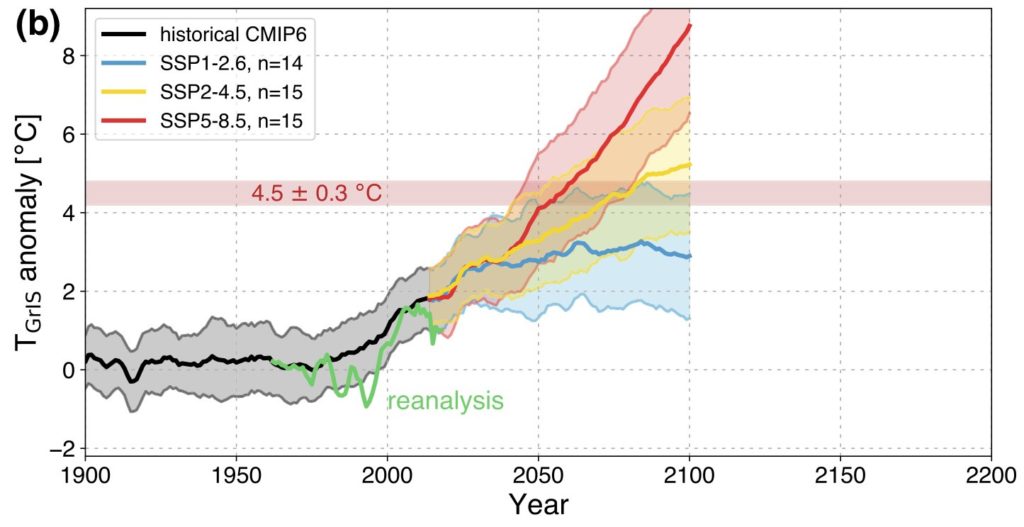
- Not all is lost, however, since under a high mitigation scenario (SSP1-2.6) the warming threshold for sustained surface mass loss will likely not be crossed by 2100. This clearly stresses the urgency to rapidly curb our greenhouse gas emissions.
- Depending on our trajectory, the Greenland ice sheet surface mass loss could contribute 6-13 cm to global sea-level rise by 2100. This estimate is conservative, as increased iceberg calving could further accelerate SMB decline. Acting now to limit global warming is thus crucial!
